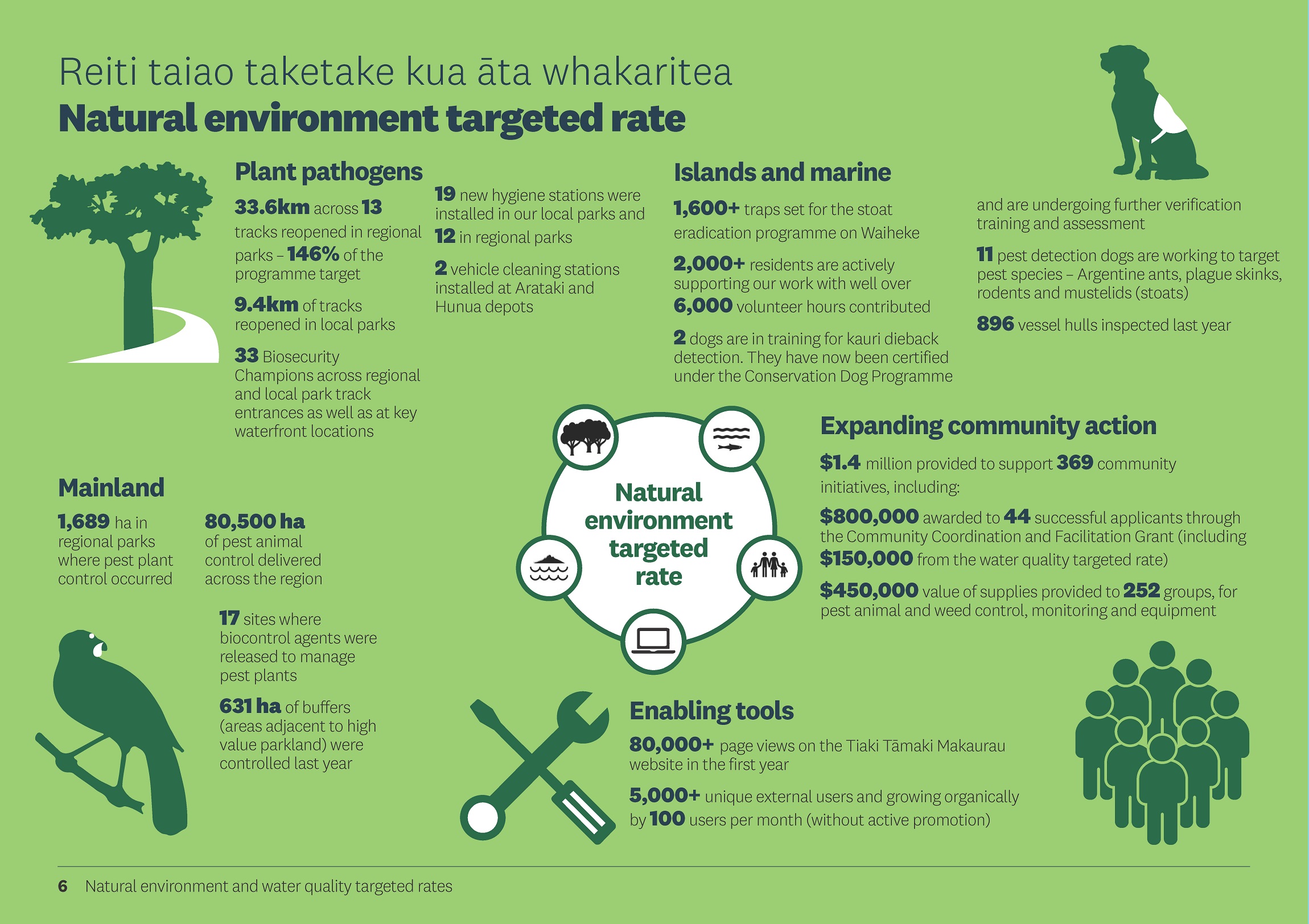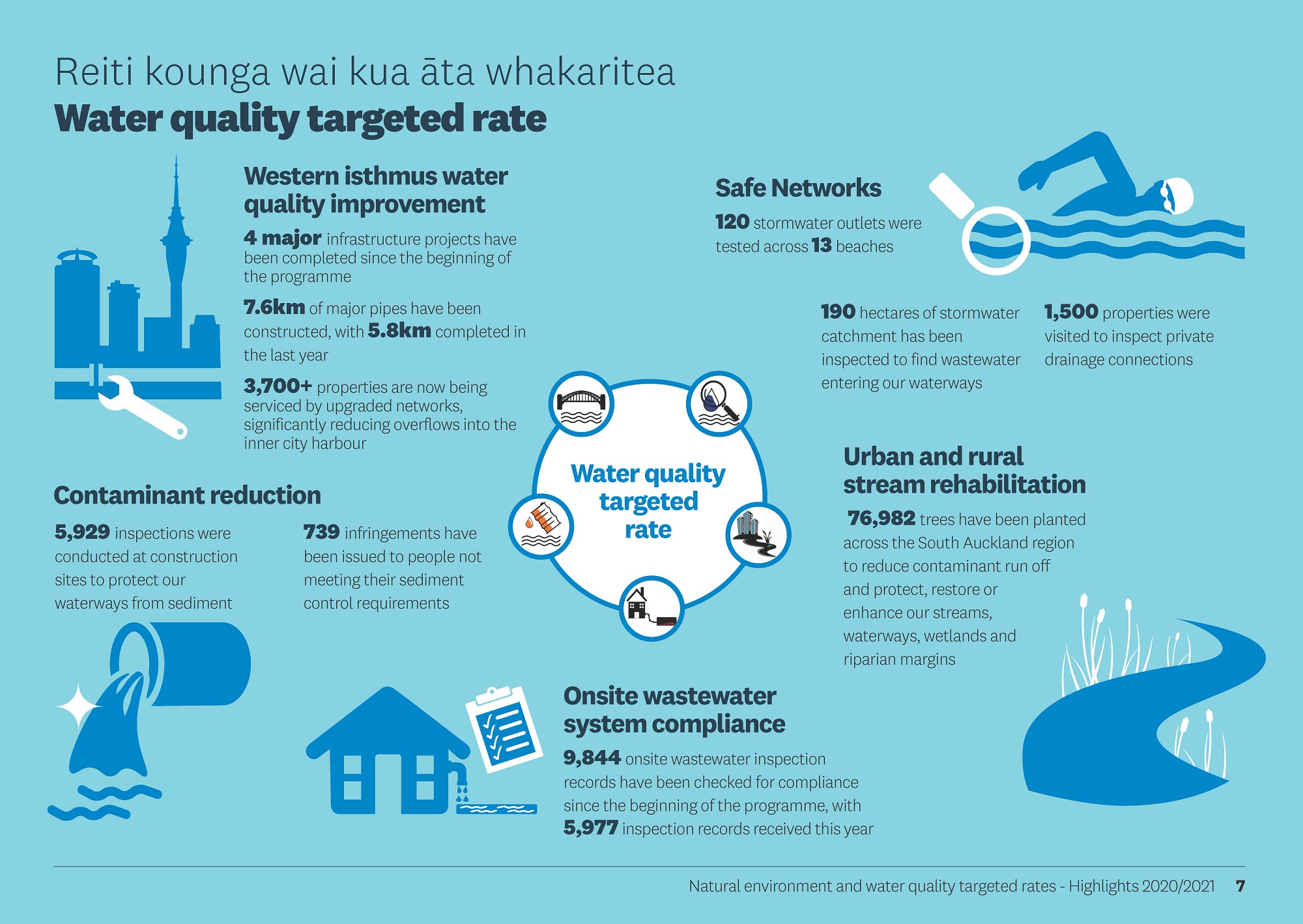The summer months are looming and while our Christmas plans may seem uncertain with COVID-19 in the frame, there are still plenty of activities Aucklanders can enjoy and be thankful for within the region’s border, our beaches and our wide-open spaces, both being protected by the targeted rates.
Three years on from the introduction of the natural environment and water quality targeted rates, work continues to deliver positive outcomes for the city.
Auckland Mayor Phil Goff says, “Aucklanders love our region’s beautiful natural environment and want to see it protected.
“We’ve ramped up Auckland Council’s investment by a further $325 million into work to protect our environment and native species, and clean up our waterways, bringing out total investment to more than $1 billion over the next 10 years.
“These projects are helping to protect kauri forests and habitats for native species, eliminate introduced pests, reopen walking tracks for visitors to enjoy and clean up our beaches and waterways much faster than previously planned.
“Thank you to Aucklanders for supporting this work, which is making a real difference to sustaining our environment and protecting it for future generations.”

Environment and Climate Change Committee Chair, Councillor Richard Hills says it’s good news for the environment and Aucklanders.
“Despite the COVID-19 effect, we’ve still managed to upscale the work programme to control pest plants and animals, upgrade tracks to help reduce the spread of kauri dieback and maintain our support for community conservationists.
“And we’ve made progress in delivering water quality projects to help prevent wastewater and sediment contaminating our waterways and urban beaches.”
Auckland Council was initially investing $763m in protecting the natural environment and cleaning up waterways over the ten years 2018-2028. Last year’s Recovery Budget extended the time frame to 2031, adding an additional investment of $107m into environment and $218m into water quality outcomes.
“The progress to protect our environment is very satisfying,” says Environmental Services General Manager, Rachel Kelleher.
“Projects to protect kauri, prevent invasive pests finding a home on our offshore islands and celebrating the certification of our first kauri dieback detector dogs are just some of the successes.
“We owe a big thank you to Aucklanders for their community conservation efforts but there is still much to be done,” she adds.

Healthy Waters has delivered the first major infrastructure projects to help improve water quality across the region.
“St Marys Bay stormwater tunnel, the Daldy St outfall and Ōkahu and Freemans Bay stormwater separations are all contributing to cleaner water in the Waitematā Harbour,” say Craig Mcilroy, Healthy Waters General Manager.
Year three highlights:
- 33.6km across 13 tracks reopened in regional parks – 146 per cent of the programme target
- 80,500 hectares of pest animal control delivered across the region
- Feral pigs on Waiheke and Argentine ants on Aotea are tracking towards eradication status
- We awarded $650,000 from the pilot Community Coordination and Facilitation grant to 44 community groups
- Our Tiaki Tāmaki Makaurau / Conservation Auckland website received more than 80,000 page views in its first year
- Water quality improvement projects were completed at Daldy St, St Marys Bay, Ōkahu Bay, and Freemans Bay, 3700+ properties are now being serviced by upgraded networks
- 190 hectares of stormwater catchment has been inspected to find wastewater entering our waterways
- 5977 onsite wastewater inspection records checked for compliance
- Four teams are currently deployed under the 2 in a Ute programme, which pairs an experienced contractor with a local trainee to manage water-sensitive assets in their area
- 5929 site visits carried out at building sites as part of the Closing the Gap programme to protect out waterways from sediment, with 739 infringements issued for non-compliance.


